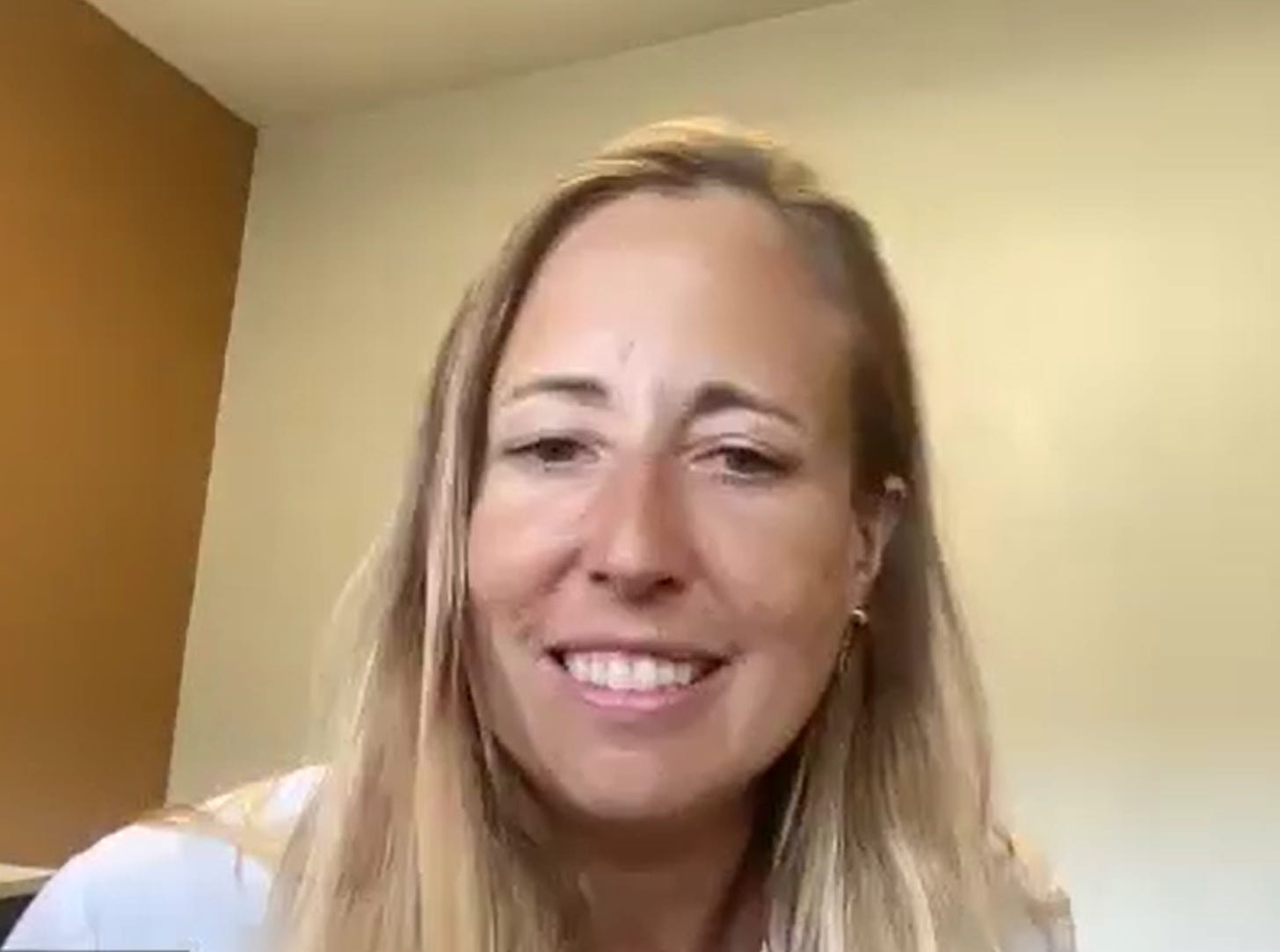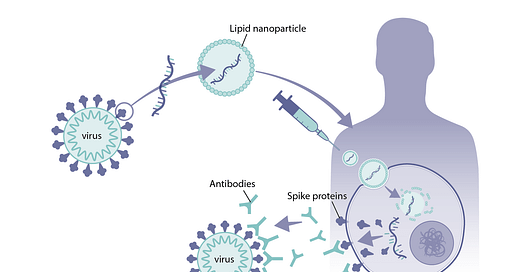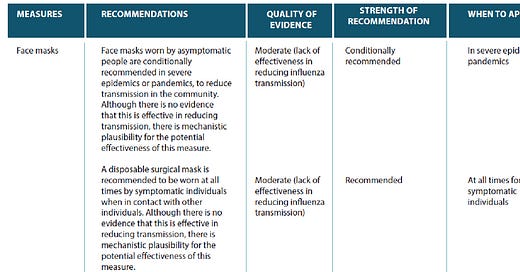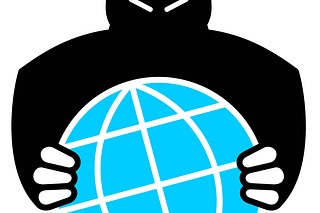
Discover more from Fear of a Microbial Planet
Health Culture Shock
Dr. Tracy Hoeg on Zombie mink and how cultural differences between U.S. and Scandinavian countries might explain their different pandemic responses.
As a part of my book research, I’ve talked with numerous experts on COVID science and medicine. Two of those discussions I’ve already transcribed and posted here. Recently, I talked with Danish-American physician and epidemiologist Tracy Beth Hoeg on how cultural differences between Nordic countries and the U.S. could explain differences in COVID responses. Transcript edited for clarity and relevance.
ST: First of all, you have an interesting background. I’d like to hear you talk a little bit about how you got into medicine and epidemiology, and how you ended up in Denmark.
TH: I’m from Wisconsin and went to UW-Madison, and when I was a sophomore I went to France to study at the University of Paris. I basically had a life-changing experience because I had been into music and writing, arts and literature. Then I met a German physician who I became really good friends with and he was like, “If you want to spend your life traveling the world you should be a doctor. Being a doctor gives you a useful skill everywhere that you want to go.” Being a literature major, you don’t really have a tangible skill. After I finished studying at the University of Paris, basically film and philosophy, I came back to Madison and took premed courses, and loved it.
TH: When I took the MCAT so late, I had to take off a year, so I moved back to France again, and I worked as a teacher in a school for physically handicapped children. I taught middle school English. Another amazing experience. After that I went to medical school at Medical College of Wisconsin and matched into an Ophthalmology residency program and then met my husband, who is Danish. I ended up finding out that I was pregnant a couple of days before I started my residency. Then I found out about the fifteen days of maternity leave and the medical bills that I was gonna have to pay. I couldn’t figure out how to do it. So we made this crazy decision to move to Denmark. I worked in urgent care for a year and during that time we applied to go to Denmark. I learned Danish, because you have to know Danish to be a doctor there.
TH: It’s very challenging to practice medicine in Scandinavia. I had to take medical school courses or a certain number of tests, some where you have to get one hundred, otherwise they don’t allow you to get your medical license. It took me about six weeks, and I passed everything and started working as a physician. At first, I was in internal medicine, and then ophthalmology. And then the department noticed that I had done research at Harvard during medical school in aging and dementia, and they asked me if I would consider directing a large population health study. We had over three thousand participants in the study and I employed nine nurses to work with me, and we did a whole ophthalmology examination on all these people and retinal fundus photos and did studies correlating what we found with overall health. This led to a bunch of other different studies, and I eventually got a Ph.D in epidemiology at the University of Copenhagen. I was in Denmark for seven years, had a second kid and got to experience the great maternity leave.
TH: I was also a semi-professional runner, and I became interested in sports medicine. I did a study about vision loss in long distance runners with a researcher at UC-Davis, and he got me interested in coming to UC-Davis, and doing physical medicine and rehabilitation, which is the specialty I’m in now. That was six months before the pandemic.
ST: When you came back to the United States after seven years, did you feel there was a culture shock, being gone that long?
TH: The first thing I will say is that I could not remember English! I couldn’t remember how to write a medical note and basic medical stuff, obviously it came back, but it was a culture shock to read notes again and how people wrote them. It seemed everything had really changed from what I remembered seven years ago. My kids didn’t know I spoke English until we moved to the United States.
TH: It was a different culture of medicine. I was struck by the idea of VIP patients and how patient care is determined by the amount of money they have. That was a big shock for me.
ST: And then COVID hit, and you noticed some other cultural differences.
TH: I think across the world many people reacted very similarly at the beginning. People were looking at Italy and China, and early on in the winter I thought ‘this does not look good!’ I kept following the numbers, and I was struck by how slow the CDC was to respond, especially the testing issue, and I noticed that Europe was on top of that much faster. I’ve always been skeptical of the ability of the U.S. in terms of population health, but I really didn’t foresee how—I don’t want to use the word incompetent—more disappointing in the way (the CDC) reacted to the pandemic.
TH: But the first thing that really stood out for me, and I know you want to talk about, is how quickly Scandinavia opened the schools. In Denmark they locked down and in Sweden they didn’t, and they didn’t close the primary schools, only the secondary schools. In the beginning, I thought Denmark did the right thing, but it was really unclear at that point who was going to be right. The thing I thought Denmark did that was so correct—they didn’t lock down for long because they were afraid of the consequences of prolonged lockdowns, and they knew the youngest kids were going to be the most impacted. They knew that kids were not being severely affected by COVID and they knew you cannot open the entire country unless the kids have somewhere to go. So they opened up the Tivoli Gardens as an outdoor space for kids and used Girl and Boy Scouts’ club houses. It was a just a mobilization of the entire country’s efforts to get these kids back in school so that everyone else could go back to work and the people could get on with their lives.
TH: It wasn’t just Denmark. Much of Europe opened that spring, and we saw that cases went down after the schools opened across Europe.
ST: Going back to testing, I had a collaborator in Denmark who basically repurposed his entire lab for testing. He was doing basic science, nothing directly clinical. And just that quickly, he was able to turn his lab around and do just testing for several months. That’s not anything we could have done here.
TH: I experienced the Scandinavian way of doing things with research before really experiencing the American way. It is very dynamic, there’s lots of opportunities to apply for grants, and it’s not difficult to figure out how to do it. You’re only limited by your creativity. And when I came back to the United States, I saw how the NIH worked and how it takes so much efforts to fill applications and find a specific person to work with, and you have to do their research. It was very inflexible. I had a lot of research projects I was interested in doing in ultra marathon runners, which looking at COVID now sounds unimportant, but how would I ever do that here? Whereas in Denmark I thought it would’ve been easy to find some small organization to fund something like that.
ST: I want to go back to the difference between Nordic countries, because people like to point out differences in the outcomes, especially in the first few months of the pandemic, and how Sweden didn’t do as well as the others. People like to make a big deal of that, as if it were a validation of stricter measures taken by Denmark and Norway. But, to me, all three were very light, relative to everyone else in Europe and the United States and the Americas as well. What really were the differences between the three countries, other than the very early lockdown that happened?
TH: Denmark actually had a couple of lockdowns again, not full lockdowns, but they closed the schools again. But they were very short and they always had places for kids of essential workers to go. It was very important, because 90% of moms, if not more are working full time, which is way higher than the U.S. So, even if they closed schools, it was temporary. But Sweden never closed the schools at all. So that was the difference, as far as I could tell, Norway’s approach was very similar to Denmark’s, with intermittent lockdowns if there was a knew variant, but it seemed like they kept getting forecasts from the U.K. Even my Danish doctor friends were like,"Why are we locking down again? They were very frustrated that schools were closing again.
TH: But in the end, I think Sweden had slightly higher overall excess mortality than Denmark and Norway, but it wasn’t by a lot. It was Martin (Kulldorff) who made the good point that I haven’t thought of, they Sweden had just had their winter break, and a lot of cases came into Stockholm. I’m not sure if you’ve talked about that…
ST: Oh, it’s in the last chapter (of my book).
TH: OK good, you’ve been over that already. You know, for a long time, I had said I think Denmark was right, but it’s tough to say now beause their outcomes have been so similar overall.
ST: Actually, if you do age-adjust excess deaths, no Nordic country has any excess deaths.
TH: Oh, age-adjusted? Interesting.
ST: It all goes negative.
TH: Oh! Actually, I did see that. That’s a good point, I’m going to look that up again. Thanks for mentioning that.
TH: And Denmark, they culled the mink…
ST: Right! I’m sure that was the key, actually…
TH: Which apparently did not work. I don’t know if you know about the zombie mink, but there were a bunch that didn’t die, they kind of just came back out of the ground.
ST: Wow. <laughs>
TH: I know. But they’ve apologized for killing the mink, which is another interesting thing about Denmark, the apologies. Which I love, even though it’s a little bitter, because like a lot of these things they should have known from the beginning. They also apologized for the child vaccinations by saying, “you know, we were wrong.” Well, they said it, and I think that’s part of the reason trust is so high in Scandinavia, it’s like a partnership between public health and the people.
ST: In the article you wrote for Sensible Medicine, you wrote about how people in Denmark and other Nordic countries seem to have a special responsibility towards public schooling and child development that we don’t seem to have, for some reason exposed in the last two years. How do you explain that cultural difference?
TH: It’s not just that they prioritized children in schools, they prioritize giving parents and families the time to be with children in their formative years, and it sets up this culture where caring for your children and being there as they develop and noticing how important that is is a prominent feature of Scandinavia that doesn’t exist in the United States. I think it has to do with the sort of structure of the work week being shorter and more vacation time and flexibility around sick days and leave and things like that. Nobody looks at other people as being weak if they need to do something with their family. People like to brag about the adventures they go on with their families on the weekend and what they are doing for their kids. A good life there is how you treat your kids. It’s not like that here. It’s a competition—my kids in this or that competitive thing.
ST: That’s actually a pretty good segue to what I really like to talk about, because I like to pin the U.S.’s response as being enabled by this safety culture that we have here in the United States. It’s just gotten out of control. Children are taught early in life that the worked is a really dangerous place, and it wants them dead. This has been going on for a long time, like a couple of decades. Now, you have people in their twenties or even thirties that were raised by these helicopter parents, (and they demand) that risks be completely removed from their lives. I have this feeling that the differences in culture in places like Denmark, Sweden and Norway are actually very key to how they viewed their responsibilities in responding to the pandemic.
ST: When I was in Denmark a few years ago, I gave a talk, because I have collaborators there, and they invited me. I had hosts—when I had dinner with them— that talked about that safety culture difference between Denmark and the United States. They mentioned a story about a Danish couple that years ago that went to a restaurant in New York City and left their kid in a stroller on the sidewalk so he could watch people walk by. And they got arrested, and people in Denmark were just floored by that.
TH: I was, too! <laughs> That was just when we moved here, or I think shortly before that happened. And I remember thinking, well what’s wrong with leaving your child outside of a cafe like that? Well, I had the Danish response, because when you bring them to daycare like little babies they all sleep outside in their little beds. And kids bike and walk to school. Parents here do not let their kids go out and play on their own and be independent. It also has to do with how the towns and housing structures are set up that people can walk and bike everywhere.
TH: When I heard about people being worried about kids doing schooling outdoors, I was like why is that worrisome? In Denmark, kids are outdoors in the rain, in the cold. You just get them dressed right in their waterproof garments.
TH: There are a lot of layers of extra protection here that kind of irritate me, even to the point of buildings where you can’t open windows. Even in the hospitals there it was like, “oh, just open the window or go out on the deck.” Maybe it has to do with a more litigious society, but kids have a much more natural upbringing where they spend a lot of their school days outdoors. It’s like the Rudolph Steiner method of schooling, I don’t know how familiar you are with, but there’s much more concentration on play and building bonds with people and being outside and less on “you have to learn to read and write at this particular time.” So it’s a bit different in that way.
ST: Here it’s— “you are caring for them if you are keeping them safe.” It’s not the same thing as fostering their development, which is what it sounds more like in Denmark. Not letting kids learn their own limits by, you know, falling off the monkey bars. That’s part of their development. At the school my kids go to, my daughter fell off the monkey bars and hurt her arm and we had to get it x-rayed, and another kid had actually broken their arm the same week, and they wrapped it (the monkey bars) up with caution tape and didn’t use it for months, until finally the kids went and tore it down and just started using it again.
TH: Good for them! <laughs>
ST: It was the principal, who I really like, who said “this may not be appropriate for them to play on.” And I said, “well the reason is because they don’t get a chance ot play on anything like that anymore.” Now, when they do actually play on something like monkey bars, they haven’t learned their limits earlier, and so when they are exposed to these kind of things they are more likely to get hurt.
TH: Absolutely.
ST: And then the response is “we need to make this safer” rather than “we need to do more to teach them to learn their own limits.”
ST: I feel like now we’re doing this with infectious disease as well. Because you had big spikes in RSV and things like that from keeping kids away from each other. Influenza also. And the later they get some of these infections, sometimes they’re worse, depending on what it is, obviously. Now, people are talking about engineering buildings, so that it’s completely sterile air. I feel like we are going this route in multiple directions.
TH: Life is not without risks, and I think that is much more recognized in Scandinavia than it is here.
ST: The same thing goes for vaccinations of young people.
TH: So something key in the pandemic in terms of safetyism that ended up working well for kids there (in Denmark) is that because they allowed them to get back to normal more quickly, they then realized more quickly that it was OK. I experienced this in my own life, like when we close our clinic for a couple of weeks, and then I was scared to go back and once I was there it was like, “Oh, I can do this,” and I think that what happened with the schools in the U.S. Once people had a large amount of time to build up in their minds about what was going to happen when schools reopened, and there was not that time to develop that extreme fear, especially in Sweden. I do think a big part of it, mentally, was just not waiting so long and having it build up like that.
ST: That’s the whole psychology right there. With the mandates, everyone is forced to act afraid of each other, and you don’t have the holdouts that demonstrate, “Look, here I am living normally, flying in the face of what everyone’s saying, and I’m alive, and then, maybe I got a mild infection or something.” And that was actually a much slower process in places where there was stricter restrictions. But it was so interesting how people didn’t believe that other places were normal. I talked to someone in Iowa who had grandchildren visit from New York, and he said it took them five days to not wear a mask outside. No one was doing in it Iowa…
TH: Yeah, totally, you see it with your own eyes. That’s exactly what happened with my kids in school. They actually had summer school in 2020, and the teachers after that decided, “I guess it’s OK.” It was weird—we had a diverse private school similar to public schools, not super fancy, but the messages were not getting spread from one school or diocese to another. It was very odd.
ST: People didn’t believe it when you try to tell them one place was completely normal, and they were all still locked down. They just refused to believe it.
TH: Even after our Wood County Wisconsin study, here was always something else, “Well, that’s because it was in a part of Wisconsin where everyone is white.” I was like, “Oh, gosh, there’s always going to be something.” And then they said “They were able to open windows and eat outside, and we were like, “well, no actually they weren’t, they didn’t have six feet of distance and couldn’t open the windows.” It was late October and November, and it was freezing cold. People were still like, “we just can’t reproduce it where we are.” It was always something, you know, the moving goalposts.
ST: You went from talking about how schools were safe during COVID and doing research that followed that up, to talking about vaccines for young people and safety issues around that and cost/benefit trade offs. Obviously, those topics are not always well-received by a lot of people when you delve into them. Give me some thoughts about how those topics were politicized and how you got a lot of flack over them.
TH: First of all, with the child vaccines, I was very surprised how quickly they were approved and then happy that kids who are high risk had a vaccine that’s available. Then, it went from, “we actually don’t know about the efficacy against severe disease. We don’t know about the efficacy against transmission long term” to becoming this cultural thing, where you have all this peer pressure to get your children vaccinated, even if they’re healthy, or it’s mandated by schools and sports. And so my interest all along was “can we do some sort of risk/benefit calculation in children, especially healthy children where there so low risk from this disease?” It really bothered me, especially in the adolescents, after we had a signal of myocarditis, and I have an adolescent son myself.
TH: We were getting this information from Israel, and I have a good friend who is an urgent care doctor in Seattle, and she was seeing all these cases of myocarditis in teenage boys and young males. And the word was not getting out. I felt like we didn’t have a sense of how often it was happening, other than the reports from Israel. So that’s what led us to do the database study. And I thought naively that people would want to know some idea of how common this condition is in that age group and males vs females. I think our study provided very valuable information at a time when we didn’t have much information and was considered by some of the top journals in the world. But I now know controversial topics are tough to get published, of course it was eventually published.
TH: This is still a huge issue because we are recommending boosters to the same population, and you know our risk/benefit analysis didn’t even find the second dose was worth it in adolescent boys or even probably a first dose in kids who had already been infected who are otherwise healthy. To this day, the CDC seems totally incapable of performing risk/benefit analyses and it’s really troublesome. I wanted to make a contribution to that subject and say, OK, now we have this information, now let’s change our policy. But nothing changed, and we just kept recommending more.
ST: So, you have your peers in Denmark who you still talk to about what’s going on in the United States. What do they say about what is happening or happened here?
TH: It was really hard for my in-laws to believe what was going on in the schools, but at the same time our kids were in school, so that was normal. The Scandinavians and Danes I talked to, the hardest thing for them to believe was that we were having young kids wear masks. I remember talking to a Swedish ophthalmologist friend who was very much like, “we need to lock down and we need to have everyone wear masks.” We didn’t see completely eye-to-eye on that. But we both took COVID very seriously. And then he said some comment about people wearing masks in his clinic, and I said “yeah, it’s really hard to get kids to wear masks,” and he said, “no, I’m not talking about kids. Why would kids ever wear a mask?” Even though he was very concerned about COVID, the idea of putting a mask on a child’s face was unthinkable.
TH: I think it’s really hard to fathom that there could be so many children that were kept out of school and had nowhere to go. That was the hardest thing for me to understand, not only can these kids not go to school, they have nowhere safe to go.
ST: Once I talked with the school district superintendent about how they would delay school even if it was cold or cancel for an inch of snow, because they think they are improving safety. But my argument is that there are a lot of kids where school is the safest place for them. If something happens when they would normally be at school, is the school responsible? If the kids are waiting for the bus in the cold and refuse to wear a coat, that’s somehow the school’s problem, and that blows my mind.
ST: The last thing I wanted ask—you know your (doctor) friends in Scandinavia, if they came here and said something about masks in California, they might get punished, because of the legislation that’s designed to punish doctors that spread misinformation. And obviously, with your reputation—
TH: —Yes, my impeccable reputation.
ST: —That could be a problem for you. What’s the status of all that?
TH: I’m very worried about it. I’m a very truthful person and am extremely committed to giving my patients information that’s to the best of my knowledge. I think that’s something my patients really value in me. I actually have many patients that come to me asking questions about COVID, and even to this day about boosters, about masks, about how effective the vaccines are. You know, I’m a PM&R doctor, but we see patients of all ages with all sorts of medical conditions. Knowing that bill or law exists has made me paranoid in a way that I didn’t even expect. I think other doctors feel that way too, those who have been committed to following the most recent studies who are now wondering, “how caught up is the California Medical Board?” Someone wrote something funny like, “are we going to be getting an app on our phone that tells us what the consensus is from day to day?” That’s what it would take, because things change so quickly, our knowledge evolves.
TH: I’m still getting online threats, people reporting me, people telling me I’m going to have fake patients who will report me. That’s just not helpful. It does not improve patient care, having to worry about whether or not what comes out of your mouth is what someone else thinks the consensus is, whether it’s right or wrong. We should really be focused on just telling the truth the best we can.
ST: Is it going to be like Twitter or Facebook jail, where people are censored for citing published research or Pfizer press releases?
TH: One of the Senators who’s on the bill, Senator Pan, he’s been all along arguing for masking children without evidence of efficacy and mandating vaccines without doing a really thorough risk/benefit analysis. Like Jay Bhattacharya says, it’s extreme hubris to say “I’m the one who knows everything”. No, we should always be working together to find the answer.
Subscribe to Fear of a Microbial Planet
Fighting back against a germophobic safety culture.















Excellent interview! I am thoroughly impressed by her background and everything she talked about during the interview. Here's hoping that CA law gets shut down before she, and others like her, do
Tracy is one of the heroes of this uniquely American tragedy. She spoke out early, often and courageously to defend science and plead for the restoration of normalcy for America's kids. Tracy, the Urgency of Normal doctors and the authors of the Great Barrington Declaration should all be lauded and amplified, instead of denigrated and censored, as has been the norm.